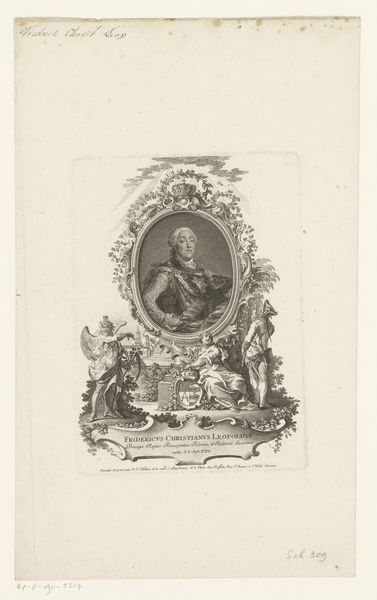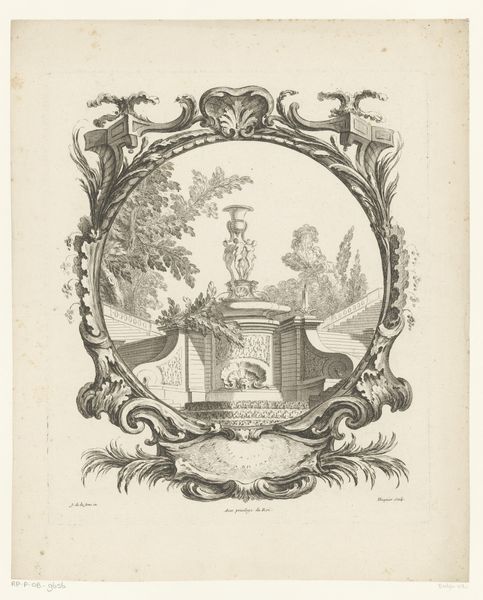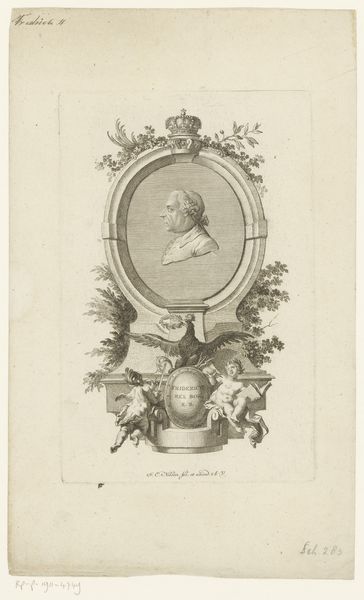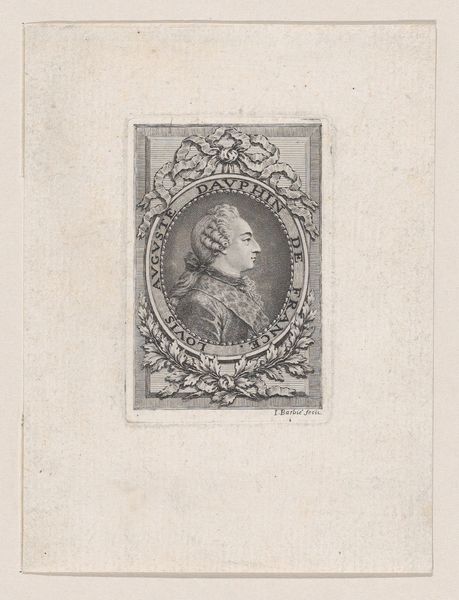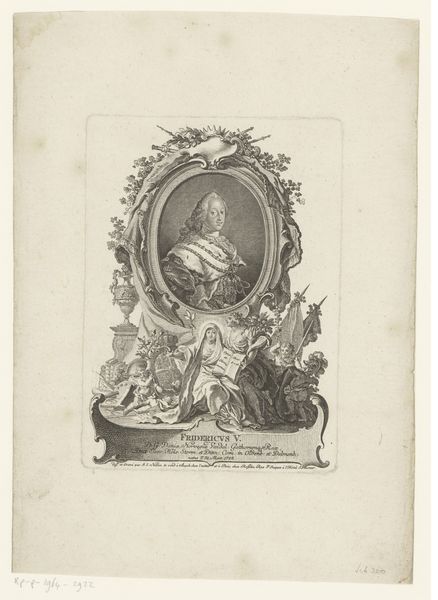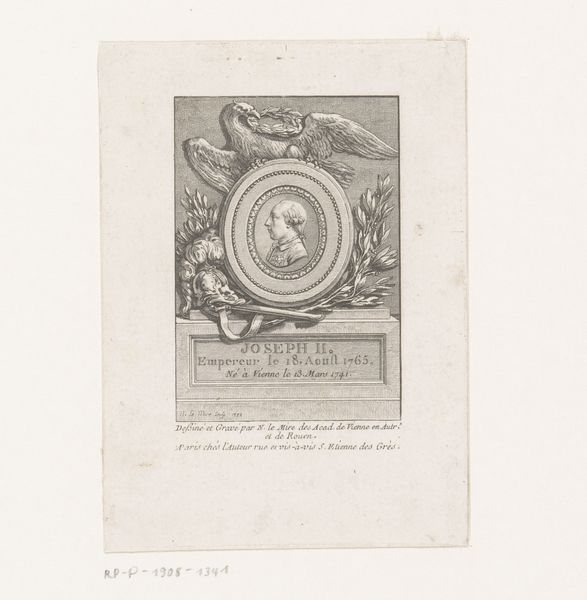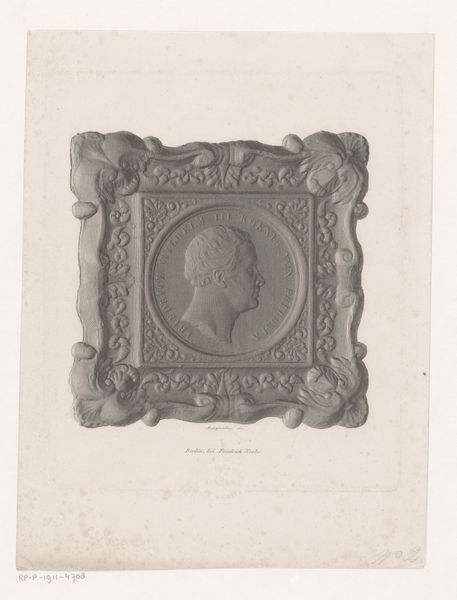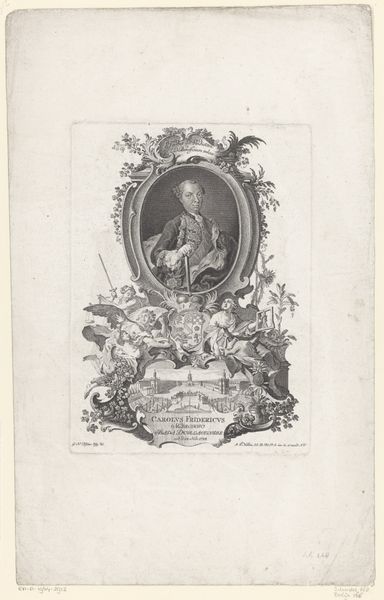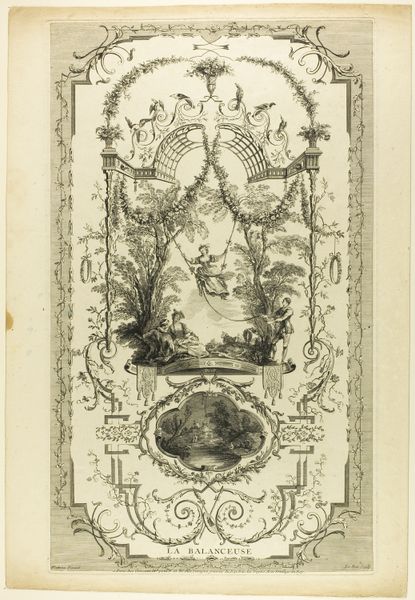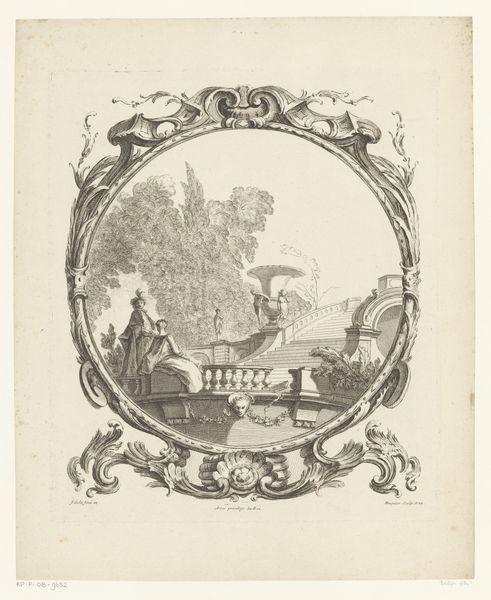
print, engraving
#
portrait
#
baroque
# print
#
history-painting
#
engraving
Dimensions: height 295 mm, width 260 mm
Copyright: Rijks Museum: Open Domain
Curator: Here we have a print from 1755, "Portret van Johan Conrad Spengler," currently held in the Rijksmuseum collection. It’s an engraving of Odoard Helmont von Lode. Editor: My first impression is how ornate the presentation is. It feels like a monument in itself, even before you consider the subject. Almost aggressively Baroque, with all those flourishes and details. Curator: Exactly. Von Lode was clearly embedding Spengler, whose profession was coin and medal engraver, within a context of civic importance and artistic legacy. Notice the architectural pedestal and elaborate frame around the portrait medallion. The entire image positions Spengler as a pillar of society, his identity intertwined with his public role. Editor: And how does this public role intersect with power dynamics? Spengler, in capturing likenesses on currency, essentially participates in visualizing state authority, doesn't he? It seems important to reflect on how the visual imagery created reinforces existing class structures and celebrates those in power. Who exactly was consuming such portraits? Curator: Certainly, portraits like these functioned as endorsements, circulating images of worthy citizens within the elite circles. This engraving acted as a form of social and professional capital. The visual style also harks back to classical ideals, further legitimizing Spengler’s status by associating him with historical figures known for wisdom and leadership. We shouldn't view this imagery as neutral. Editor: No, of course not. Looking closer, the very act of framing Spengler within such grandeur speaks volumes about how those commissioning these portraits saw themselves. They controlled the narrative, deciding whose stories got told, whose faces were remembered, and, even now, which of us were in a place like this one contemplating this portrait. It emphasizes that history is not just about what happened but who gets to write it. Curator: Absolutely, by studying such works, we can uncover layers of meaning related to identity and power. Editor: It's important to bring these insights to contemporary conversations about how we represent individuals and communities today, questioning who benefits from certain narratives. Curator: Indeed. Approaching artworks in this way bridges the past and present, revealing how the social and political underpinnings of art shape our perceptions.
Comments
No comments
Be the first to comment and join the conversation on the ultimate creative platform.
